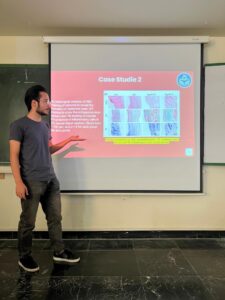This project focused on a comprehensive comparison of scaffold fabrication techniques used in wound healing applications, highlighting how different methods influence structural, mechanical, and biological performance. The study evaluated key fabrication strategies — including freeze-drying, electrospinning, and 3D printing — in terms of cost-efficiency, scalability, and their ability to mimic the extracellular matrix (ECM) for effective tissue regeneration.
Each method demonstrated unique advantages and limitations: freeze-drying was found to be simple and low-cost with high porosity but offered poor structural control; electrospinning produced ECM-like nanofibrous networks ideal for cell adhesion, though limited by mechanical weakness; and 3D printing allowed high precision, multi-material design, and incorporation of living cells, albeit with higher fabrication costs. The project also compared these methods through practical case studies, such as 3D-printed aloe-loaded alginate-gelatin hydrogels, sulfated freeze-dried calcium alginate scaffolds, and collagen-based bioactive hydrogels.
By analyzing fabrication performance from both engineering and biomedical perspectives, the project emphasized the trade-off between cost-effectiveness, customization, and functional efficiency. The findings underscored that future wound-healing scaffolds will likely integrate hybrid approaches—combining the precision of 3D printing with the biocompatibility of natural hydrogels—to achieve optimal regenerative outcomes.
